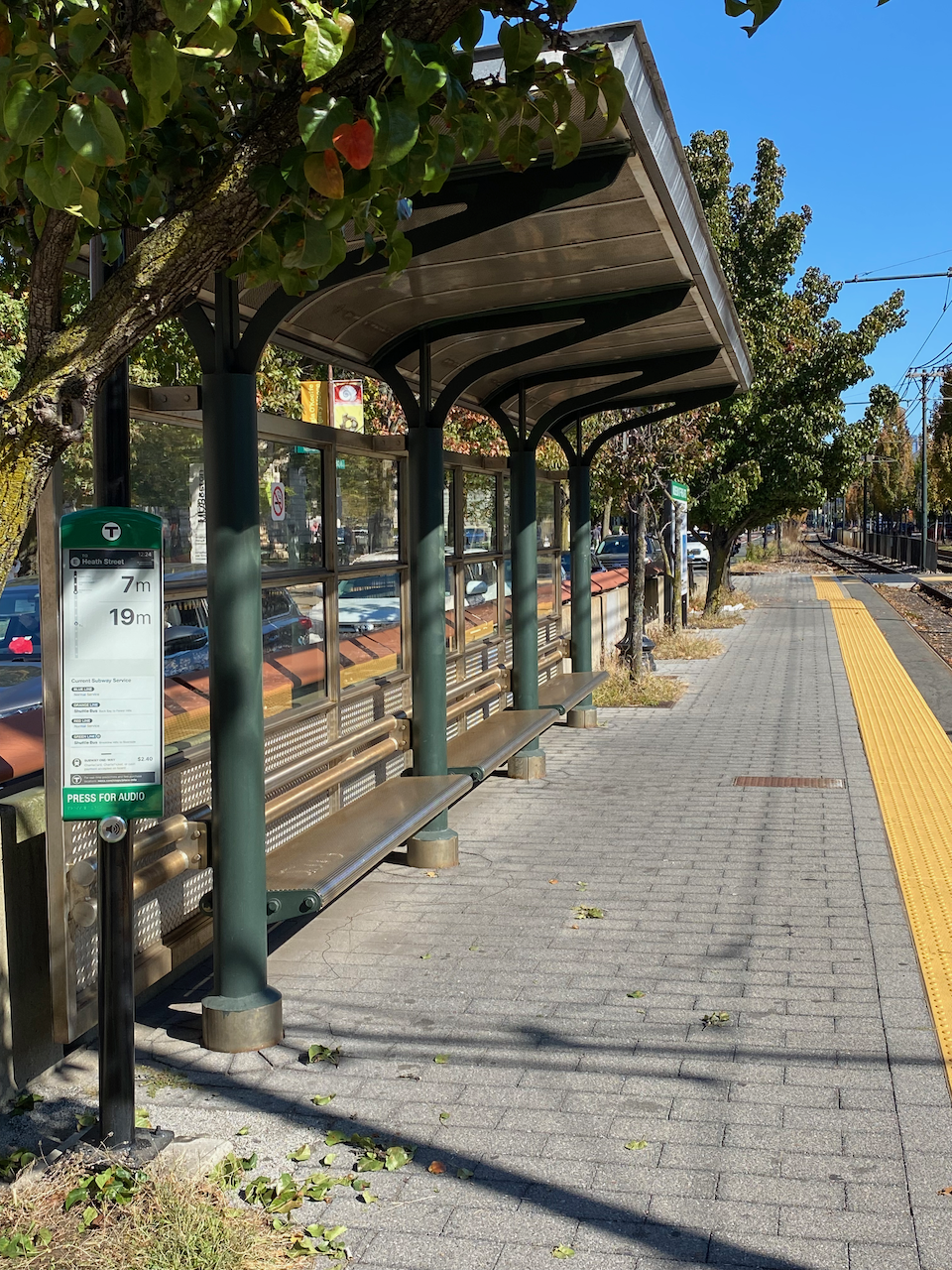Solar-Powered E Ink Signs

- Contract awarded: May 2023
- Projected completion: Late 2025
- Budget: $3.4 million
- Status: Pilot projects complete; scale-up project in planning & design
Realtime arrival information significantly improves the experience of taking public transit, so we’re working hard to make this information available throughout the MBTA system. However, access to electricity and the fiber network is limited or nonexistent in some areas.
Thanks to solar-powered electronic ink (E Ink) signs, we can now bring realtime information to more stations and stops.
Building a Better T
As part of our $9.6 billion, 5-year capital investment plan, we're renovating stations, modernizing fare collection systems, upgrading services for our buses, subways, and ferries, and improving the accessibility of the entire system.
What We're Working On
After conducting multiple pilots to test E Ink technology and gather rider feedback, the MBTA approved a project to scale up the program.
In 2023 and 2024, we began bringing realtime information to most surface-level Green Line stations on the B, C, and E branches and to additional bus stops in communities throughout Greater Boston.
In 2025, we plan to add 52 more signs along the Green Line for a total of 128, and at least 40 more signs to bus stops in the Greater Boston area.
As of December 2024, we’ve installed 76 signs at stops on the Green Line’s B, C, and E branches.
We’ve installed 33 signs at bus stops in six municipalities in Greater Boston:
- 1624 Blue Hill Avenue
- 570 Broadway @ Elmwood Ave
- Blue Hill Ave @ Ellington St - Franklin Park Zoo
- Brighton Ave opp Quint Ave
- Broadway @ Everett Sq
- Broadway @ Fourth St
- Broadway @ Gladstone St
- Broadway @ Norwood St
- Broadway @ Yeamans St
- Broadway @ Central Ave
- Church St @ Lexington St
- Corinth St @ Cohasset St
- Eliot St @ Bennett St
- Harvard Sq @ Garden St - Dawes Island
- Hawthorne St @ Broadway
- Hyde Park Ave @ Oak Street
- Hyde Park Ave @ Wolcott Square
- Lynn St @ Beach St
- Market Square @ Western Ave
- Massachusetts Ave @ Harrison Ave
- Montello
- Morton St opp Wellington Hill St
- Poplar St @ South St
- S Huntington Ave @ Huntington Ave
- Saint James Ave @ Dartmouth St
- Tremont St opp Roxbury Crossing Sta
- Warren St @ Quincy St
- Warren St @ Townsend St
- Washington St @ Blue Hill Ave
- Washington Ave @ Broadway
- Washington St @ Firth Rd
- Watertown Sq Terminal
How We Got Here
In 2017, we launched our first pilot to test sign durability and performance, gather customer feedback, and determine whether we could add signs to additional bus and subway stops. We were especially curious to know if the signs could withstand frigid Boston winters.
In 2019, we expanded our pilot testing to include bus stops and to test additional stations on the Green Line where countdown predictions weren’t already available.
What We Learned
Through the pilots, we learned that E Ink signs are a practical solution for providing realtime information where electricity is not available, as long as we scout locations to make sure there’s enough sun exposure.
We’re confident that the signs will be able to withstand extreme weather—cold temperatures didn’t seem to significantly affect performance—and ongoing maintenance requirements are minimal.
Green Line Pilot
Currently, less than half of Green Line stations have power for digital signage, so solar power is required for E Ink screens.
We also learned that all signs must support 4G connectivity with an option to upgrade to 5G, in order to stay connected now and into the future.
Bus Pilot
Many of our bus stops lack the infrastructure and network connectivity to support standard realtime information displays. Following the initial Green Line pilot, this project sought to hear from riders about how they judged the usefulness of E Ink screens.
We paired with Boston’s Institute for Human Centered Design to customize the user interface and installation approach for maximum accessibility.
Related Projects

This project is one of many we're working on to ensure twice as many passengers have access to a safer, more comfortable, and more reliable Green Line by 2030.
Photo Gallery
Contact Us
For all questions and comments related to solar-powered E Ink signs, please contact GLT@mbta.com.
Recent Updates
Building a Better T
As part of our $9.6 billion, 5-year capital investment plan, we're renovating stations, modernizing fare collection systems, upgrading services for our buses, subways, and ferries, and improving the accessibility of the entire system.
Related Projects

This project is one of many we're working on to ensure twice as many passengers have access to a safer, more comfortable, and more reliable Green Line by 2030.








